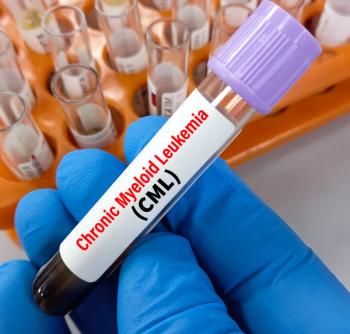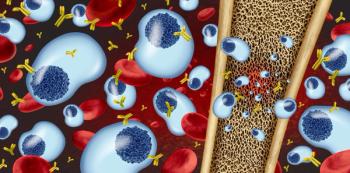
- Volume 0 0
Insomnia: Treatment Choices Come with New Warnings
Dr. Zanni is a psychologist and health-systems specialist based in Alexandria,Va.
Case Scenarios: InsomniaSleep mystifies scientists. Its essentialness, however, is irrefutable - most adults require 7 to 8 hours of sleep. Inadequate or poor-quality sleep leads to poor concentration, irritability, reduced energy, and poorer health outcomes. Severe sleep deprivation is outright dangerous; it affects performance in a way similar to intoxication, increasing accidents. Some states have or are considering restricted driving privileges for individuals with sleep disorders.1,2
The 4 categories of insomnia include inability to fall asleep, inability to sustain sleep, early morning awakening, and unrefreshing sleep. Patients' subjective experiences are important in diagnosis, especially when patients report adequate but unrefreshing sleep.
Insomnia can be transient, lasting only a few days; short-term, lasting up to 3 weeks; or chronic, lasting longer than 3 weeks.3,4 Transient and short-term insomnia generally are linked to temporary stressors, with insomnia dissipating as stressors fade or sufferers adapt.Disorders affecting sleep regulatory mechanisms cause primary insomnia. Table 15,6 describes factors that cause secondary insomnia.The prevalence of insomnia is unknown, because researchers use varying definitions. Nevertheless, researchers estimate that up to 33% of adults have sleep disorders and 21% experience chronic insomnia.4,5 Among chronic sufferers, 80% report symptoms lasting longer than 1 year, and 40% experience symptoms for more than 5 years.4 Women are 1.3 times more likely to be affected.5 Prevalence increases with age; 50% of those older than 65 years report sleep disturbances.3The strong link between insomnia and psychiatric conditions also may represent a precursor. One study found that 33.3% of insomniacs developed a psychiatric condition within 1 year, compared with 8% of controls.4Treatment
Nonpharmacologic interventions include behavioral therapies, biofeedback, meditation, relaxation techniques, and sleep-hygiene education. Improving sleep hygiene encompasses several behavioral changes, but counseling should focus on the following techniques:Maintaining a regular sleep schedule, avoiding naps and "sleep-ins" after a restless nightAvoiding clock-watching or prolonged wakefulness in bedAvoiding liquids and meals close to bedtimeExercising regularly, but not within 4 hours of bedtimeRestricting bed activities to sleep and intimacy, avoiding television watching, reading, and other distracting activitiesAvoiding caffeine and other stimulants such as chocolate, alcohol, and tobacco7
Pharmacists should counsel patients not to surrender too soon when trying sleep-hygiene techniques. Research demonstrates that up to 80% of patients improve with persistence.8
If nonpharmacologic interventions are insufficient, OTC products might be considered. Most contain antihistamines for their sedating effects, and several brands combine an antihistamine and a nonsteroidal anti-inflammatory drug, targeting minor pain-related insomnia. Many OTC agents induce daytime drowsiness, however, and patients may not feel rested. Blurred vision and dry mouth and throat may be troublesome.
OTC agents are not recommended for patients with angina, heart disease, glaucoma, or problems with urinating, as well as patients taking medications with contraindicated active ingredients. Doxylamine-containing products are contraindicated in patients with chronic pulmonary disease.6Patients may confuse "natural" with "safe." Pharmacists should advise patients to seek physician approval before taking remedies such as melatonin, valerian, kava, or St. John's wort. Pharmacologic treatment, primarily benzodiazepine (BZD) and nonbenzodiazepine (non-BZD) hypnotics, is often the only effective intervention for severe insomnia. BZDs increase sleep duration. Potential tolerance and dependence limit their use to short-term insomnia. Clinical efficacy declines when BZDs are taken longer than 30 days. Side effects include residual daytime cognitive impairment (especially with the drugs with longer half-lives); hangover effects; psychomotor impairment; and anterograde amnesia. At discontinuation, tapering withdrawal will avoid rebound insomnia, irritability, and anxiety.5,6The non-BZDs, available since the 1980s, are selective for GABA-A receptors containing alpha-1 subunits, resulting in fewer side effects. Additionally, half-lives of 1 to 5 hours allow clinicians to treat selectively. The 1-hour half-life of zaleplon, for example, makes it ideal to induce sleep. Studies of intermittent non-BZD dosing (patients self-regulating dosing, taking 3 to 5 doses weekly) report improved and sustained outcomes in some cases, similar to daily dosing.9,10 The newer non-BZDs do not induce tolerance and can be used for longer than 6 months. Rebound insomnia or other withdrawal behaviors are rare.5Adverse reactions to non-BZDs include nausea, vertigo, general malaise, residual sedation, disorientation, nightmares, agitation, antagonistic morning mood, amnesia, headache, and visual distortion. Alcohol is contraindicated, and agents may interact with rifampin, ketoconazole, erythromycin, and cimetidine.6 Whereas non-BZD abuse was originally believed to be atypical, recent studies suggest otherwise, especially by patients having comorbid substance abuse and psychiatric illness.3Insomnia and depression frequently are linked, and some patients receive hypnotics and antidepressants. Some clinicians prescribe antidepressants for insomnia even to patients who do not present with clinical depression. This strategy is of uncertain effectiveness. Interestingly, some newer antidepressants (eg, nefazodone) may treat depression and insomnia effectively.6Sleep Driving
Zolpidem is prescribed most frequently. When state toxicology laboratories listed zolpidem among the top 10 substances in impaired drivers, practitioners took note.11 Sleep driving is driving an automobile while not fully awake after ingestion of a sedative-hypnotic product. Some drivers admitted that they took the drug while driving, believing that they would be sleepy when they got home. Others had no recollection of driving until an accident occurred.Additional reports of sleepwalking and engaging in complex tasks (eg, sleep eating) have emerged. In many cases, prescribed doses were in the upper range and/or mixed with alcohol. Among sleep eaters, 90% also were taking antidepressants.12 In addition, anaphylaxis and angioedema have been reported.13Earlier this year, the FDA required new, stronger warnings for 13 agents (Table 2). These warnings describe potential risks, including severe allergic reactions and complex sleep-related behaviors such as sleep driving. Later this year, a required patient handout will accompany prescriptions.14 Additionally, counseling must emphasize alcohol restriction - not even a light drink earlier in the evening.15Final Thought
Approximately 20% of Americans take prescription or OTC agents for insomnia, and 15% use them nightly.6 Popular media advertise prescription agents, most offering only a cursory review of side effects. Frequent, thorough pharmacist counseling is imperative.References
- American Sleep Apnea Association. Sleep apnea and driving. Available at: www.sleepapnea.org/resources/pubs/driving.html. Accessed April 28, 2007.
- National Center on Sleep Disorders Research. Available at: www.nhlbi.nih.gov/about/ncsdr/index.htm. Accessed April 28, 2007.
- Winkelman J. A primary approach to insomnia management. Available at: http://www.medscape.com/viewprogram/3807. Accessed April 27, 2007.
- Doghramji K. Longitudinal course of insomnia: evolution and progression of symptoms over time. Medscape Family Medicine, 2005;7. Available at: www.medscape.com/viewarticle/515654. Accessed April 27, 2007.
- Terzano MG, Parrino L, Bonanni E, et al. Insomnia in general practice:a consensus report produced by sleep specialists and primary-care physicians in Italy. Clin Drug Investig. 2005;25:745-764.
- A.D.A.M. Healthcare Center. Insomnia. Available at: http://adam.about.com/reports/000027_7.htm. Accessed April 27, 2007.
- Sateia MJ, Nowell PD. Insomnia. Lancet. 2004;364:1959-1973.
- Morin CM, Hauri PJ, Espie CA, Spielman AJ, Buysse DJ, Bootzin RR. Nonpharmacologic treatment of chronic insomnia: an American Academy of Sleep Medicine review. Sleep. 1999;22:1134-1156.
- Perlis ML, McCall WV, Krystal AD, Walsh JK. Long-term, non-nightly administration of zolpidem in the treatment of patients with primary insomnia. J Clin Psychiatry. 2004;65:1128-1137.
- Krystal AD, Walsh JK, Laska E, et al. Sustained efficacy of eszopiclone over 6 months of nightly treatment: results of a randomized, double-blind, placebo-controlled study in adults with chronic insomnia. Sleep. 2003;26:793-799.
- Saul S. Some sleeping pill users range far beyond bed. New York Times. March 8, 2006.
- Szabo L. Insomnia drugs: a wake-up call? USA Today. April 23, 2006.
- Food and Drug Administration. FDA requests label change for all sleep disorder drug products. Press release, March 14, 2007. Available at: www.fda.gov/bbs/topics/NEWS/2007/NEW01587.html. Accessed April 27, 2007.
- Food and Drug Administration. Sleep Disorder (Sedative-Hypnotic) Drug Information. Available at: www.fda.gov/cder/drug/infopage/sedative_hypnotics/default.htm. Accessed April 29, 2007.
- InfoNIAC. Pills against insomnia cause sleepwalking. Available at: www.infoniac.com/health-fitness/dangerous-side-effects-in-sleeping-pills.html. Accessed April 27, 2007.
Articles in this issue
over 18 years ago
pharmacy TECHNOLOGY newsover 18 years ago
pharmacy TECHNOLOGY productsover 18 years ago
health-systems PRODUCT newsover 18 years ago
generic times product newsover 18 years ago
can you READ these Rxs?over 18 years ago
A closer look at new FDA actionsover 18 years ago
can you READ these Rxs?over 18 years ago
compounding HOTLINEover 18 years ago
Is There Science in Quality?over 18 years ago
Vaccines: Are You Protected?Newsletter
Stay informed on drug updates, treatment guidelines, and pharmacy practice trends—subscribe to Pharmacy Times for weekly clinical insights.























































































































































































































